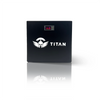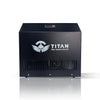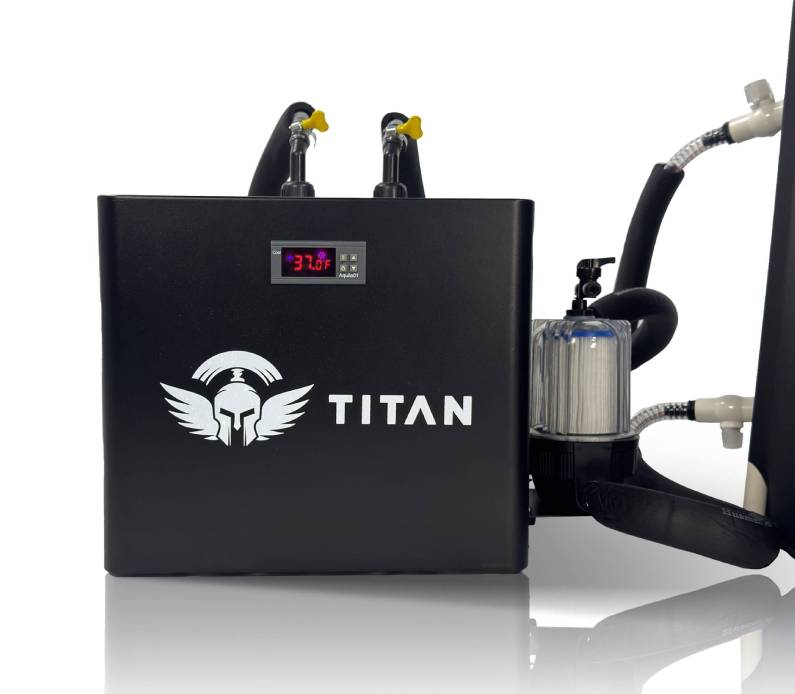
Starting cold plunging can feel scary at first. But, learning the right breathing techniques makes it easier.
Good breathing helps your body adjust to the cold. It also makes the experience less shocking. By using cold plunge breathing techniques, you can enjoy the benefits of cold therapy more.
We'll teach you how to breathe right. This way, you'll feel less pain and get more out of the cold plunge method. We want to help you feel confident and comfortable with cold plunging.
The Science Behind Cold Water Shock Response
Cold plunge therapy makes your body react quickly. You breathe fast and your heart beats faster. This happens when you get into cold water.
Your body has a strong reaction to cold water. It can make you gasp and breathe fast. Your heart rate and blood pressure also go up.
Physiological Effects:
- Involuntary gasping and rapid breathing
- Increased heart rate and blood pressure
- Release of certain neurotransmitters and hormones
This shock response is important for your body. Learning to breathe right can help. It makes cold plunge therapy safer and more effective.
Proper Breathing Techniques: Breathing right calms your body. It helps you handle the shock better. This is key for getting the most out of cold plunge benefits.
Effective Cold Plunge Breathing Techniques
The right breathing method can make a big difference in your cold plunge journey. It helps you relax and feel less stressed. When you get into cold water, your body might feel shocked. But, the right breathing can help lessen this shock.
Diaphragmatic Breathing for Relaxation
Diaphragmatic breathing, or belly breathing, is great for calming down during a cold plunge. Here's how to do it:
- Breathe in slowly through your nose, letting your belly rise.
- Hold your breath for a few seconds.
- Then, breathe out slowly through your mouth, letting your belly fall.
This method slows down your heart and helps you relax.
There are other good techniques too:
- Box Breathing: Breathe in for 4 counts, hold for 4 counts, breathe out for 4 counts, and hold again for 4 counts. It keeps you calm and focused.
- 4-7-8 Breathing: Breathe in through your nose for 4 counts, hold for 7 counts, and breathe out through your mouth for 8 counts. It slows your heart and relaxes you.
Using these breathing techniques in your cold plunge can improve your cold plunge experience. It also helps you get more health benefits from cold therapy. With regular practice, you'll get used to the cold faster.

Pre-Plunge Preparation: Mental and Physical Readiness
Getting ready for a cold plunge is more than just getting in the water. You need to be ready mentally and physically. It's key to focus on hydration, nutrition, and mental preparation techniques.
Drinking water is very important before and after your cold plunge. It helps your body stay cool and handle the cold better.
Eating the right food is also key. Don't eat too much before, as it can make you uncomfortable. Choose something light and full of energy.
Mental Preparation Techniques
Being mentally ready is as important as being physically ready. Use deep breathing, meditation, or visualization to calm your mind. These can help you get ready for the cold.
- Use meditation to focus your mind and reduce anxiety.
- Visualize yourself successfully completing a cold plunge to build mental toughness.
By preparing both your body and mind, you'll enjoy your cold plunge more. Remember, it's not just about the water. It's about how well you're prepared.

The Critical First 60 Seconds: Step-by-Step Breathing Guide
The first 60 seconds in a cold plunge are very important. The right breathing can help you get through this time easily.
Breathing Exercises for the First Minute
To enjoy your cold plunge, try these breathing tips:
- Deep Breathing: Start with slow, deep breaths. Breathe in through your nose, fill your lungs, and then breathe out slowly through your mouth.
- Progressive Muscle Relaxation: As you breathe, tense and then relax different muscle groups. Start with your toes and go up to your head.
Using these cold plunge breathing techniques can improve your cold plunge meditation. It makes the experience better and more fun.
Be consistent and patient. With regular practice, your body will get used to the cold. Then, you can relax and enjoy the cold plunge benefits.
Common Mistakes and Troubleshooting
To get the most from cold plunging, knowing what to avoid is key.
Cold plunging is good, but it can go wrong if not done right. Here are some mistakes to avoid:
- Ignoring Body Signals: Not paying attention to your body's warning signs can be harmful.
- Overexertion: Spending too much time in the cold can hurt you.
- Inconsistent Practice: Not sticking to a regular routine makes it hard to see results.
To make your cold plunge better, try these tips:
- Listen to Your Body: If you feel pain or discomfort, get out of the cold plunge right away.
- Gradual Adaptation: Start slow with the cold to let your body adjust.
- Proper Breathing Techniques: Learning how to breathe right can make your cold plunge better.
| Practice | Benefits | Potential Risks |
|---|---|---|
| Regular Cold Plunging | Clearer mind, better blood flow | Too cold if not careful |
| Irregular Cold Plunging | Some shock relief, stress drop | Not steady, might overdo it |
| Cold Plunging with Proper Breathing | Better cold handling, less stress | Very little risk if done right |
Knowing common mistakes and using these tips can make your cold plunge better. The most important thing is to listen to your body and start slow.

Beyond the First Minute: Building Your Cold Plunge Practice
Mastering the first 60 seconds of cold plunge breathing is just the start. You're now ready to build a lasting practice. Aim to do cold plunges 2-3 times a week. As you get used to it, you can do it more often.
Cold plunge therapy is more than just the first shock. It's about building a long-term habit. Start with short sessions and slowly get longer as you get more comfortable.
Always listen to your body and adjust your practice. Cold plunging will soon become a big part of your wellness routine. It will make you feel better and clearer in your mind. By sticking to it, you'll get all the great benefits it offers.
FAQ
What are the benefits of cold plunge therapy?
Cold plunge therapy helps a lot. It reduces swelling, improves blood flow, and sharpens your mind. It also boosts your immune system and lifts your mood.
How do I prepare for a cold plunge?
Drink lots of water and eat well before a cold plunge. Use relaxation methods like deep breathing or meditation to get ready.
What is cold water shock response, and how can I avoid it?
Cold water shock is a sudden reaction to cold water. It can make you breathe fast, heart race, and feel scared. Use slow, deep breaths to calm down and avoid it.
What are some effective breathing techniques for cold plunging?
Good breathing for cold plunging includes deep breathing, box breathing, and slow breaths. These help you relax and make it easier.
How long should I stay in the cold plunge during the first session?
Start with 1-2 minutes in your first session. Then, slowly get longer as you get used to the cold.
What are some common mistakes to avoid during cold plunging?
Don't push too hard, listen to your body, and prepare well. Know your limits and take breaks to avoid getting too tired.
How can I build a sustainable cold plunge practice?
Be consistent, patient, and start small. Begin with short times and slowly get longer and more often as you get used to it.


 30-Day Hassle-Free Returns
30-Day Hassle-Free Returns





